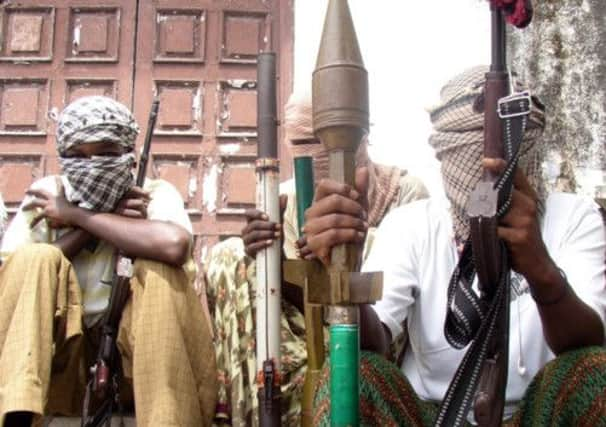Somalian militants ‘stopped aid deliveries’ says UN


The first in-depth study of famine deaths in Somalia in 2011 was released yesterday, and it estimates that 133,000 children under the age of five died, with child death rates approaching 20 per cent in some communities.
The militants have since been pushed back from large areas of the country, mainly by African Union peacekeeping troops, although parts of the countryside remain under al Shabaab’s control or influence.
Advertisement
Hide AdAdvertisement
Hide AdIn March 2011 alone some 13,000 people died from famine, the study found. In May and June 30,000 people died each month – at least half of them children. The UN’s formal declaration of famine didn’t happen until July.
At the time, al Shabaab denied there was any such famine.
“The scale of the child mortality is really off the charts,” said Chris Hillbruner, a senior food security adviser at Fews Net, a famine warning agency.
Fews Net was one of two food security agencies that undertook the study. The other was the Food Security and Nutrition Analysis Unit – Somalia. The two agencies had warned the world as early as the autumn 2010 that failed rains in Somalia meant a hunger crisis was approaching.
“The world was too slow to respond to stark warnings of drought, exacerbated by conflict in Somalia, and people paid with their lives. These deaths could and should have been prevented,” said Senait Gebregziabher, the Somalia director for the aid group Oxfam.
The study was conducted by Francesco Checchi, an epidemiologist at the London School of Hygiene and Tropical Medicine, and Courtland Robinson, a demographer at Johns Hopkins University in the US. It drew on 200 mortality surveys by the Food Security and Nutrition Analysis Unit, including 61 from the famine period, and data on food prices, wages and humanitarian access.
Philippe Lazzarini, the chief UN humanitarian co-ordinator for Somalia, said that the death toll was shocking and sobering. He said the report confirms that aid groups should have done more before famine was declared – by which point 120,000 people had already died.
Mr Lazzarini also noted that more than a dozen aid groups were banned from operating in southern-central Somalia by al Shabaab, a hardline anti-West political decision that made saving lives “extraordinarily difficult.” He said that in the months before famine was declared the crisis did not receive the amount of attention it should have, in part because of a lack of access because of al Shabaab.
“The famine was almost a silent drama of tragedy,” he said. “It was not on the news. Media did not have access. Agencies did not have access.”
Advertisement
Hide AdAdvertisement
Hide AdThousands of Somalis walked many miles to reach camps in Kenya, Ethiopia and Mogadishu, the Somali capital, and Countmany were lost along the way.
Somalia has made great progress since the famine ended in February 2012. Al Shabaab has been forced out of Mogadishu and now controls far less territory than before. The government appears more capable than the transitional federal government in place during the famine.
Mr Gebregziabher said a global conference on Somalia which will be held in London next week should encourage investment in long-term development to ensure the country does not suffer famine again.